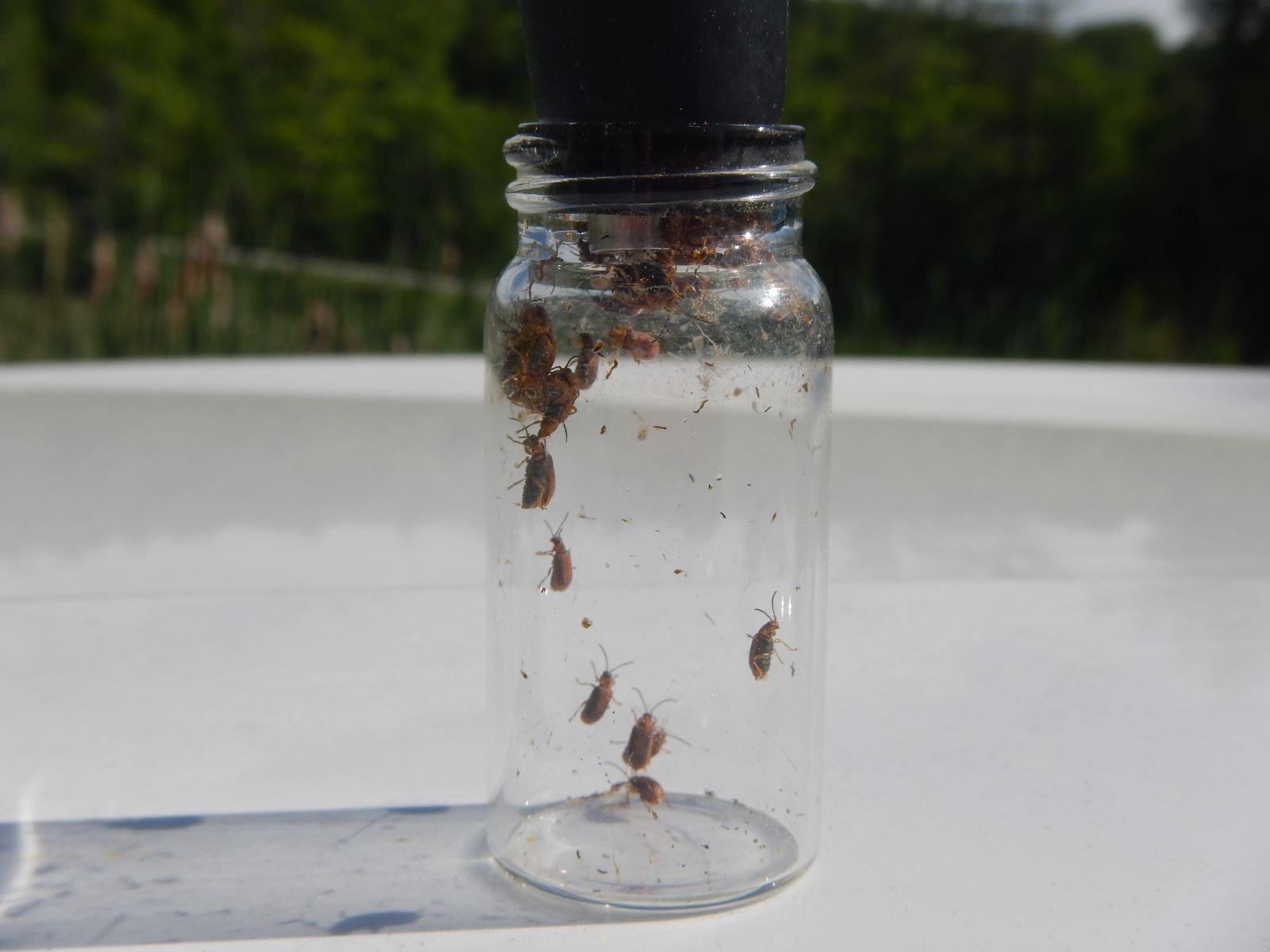Biological Controls
- Home
- Biological Controls
What are biological controls?
One common characteristic of invasive species is they often lack natural predators in the area they’ve invaded. A lack of specialized predators means invasive species can multiply unchecked, often giving them a big advantage over species native to the area in question. Biological controls, or biocontrols, are organisms that are released for the specific purpose of reducing the population of invasive species like purple loosestrife or emerald ash borer. By preying exclusively on a particular invasive species, biocontrols provide a much-needed balance that can mitigate the harm of the unwanted plant or animal. Biocontrols are studied in detail prior to their release to ensure that they are effective at reducing the target species while not causing harm to native species.
The benefits of biocontrols:
- Take advantage of natural predator-prey relationships
- Can be used on environmentally sensitive areas, near water, and in hard-to-access places
- Well-suited to treat landscape-scale infestations
- Reduce the vigor of invasive plants and can reduce seed production
- Can be used for long-term management of invasive terrestrial and aquatic plants
The limitations of biocontrols:
- Biological control agents are not available for many invasive species
- Will not “eradicate” an invasive plant
- Can take multiple years (sometimes 10-20) before any noticeable difference in invasive plant populations are seen
- Requires years of research and investment of resources
Biocontrol and emerald ash borer (Agrilus planipennis)
Background
Emerald ash borer beetles (EAB) require only their host tree, native ash species, to complete their life cycle. Ash trees are common in the Adirondacks and are also widely used as a street tree in urban and suburban areas. EAB larvae feed on bark tissue, eventually girdling and killing the tree. The forest pest has killed tens of millions of trees in the U.S. and has been confirmed in some southern and northern areas of the Adirondack region.
Emerald ash borer biocontrols in the Adirondacks
The main biocontrols for EAB are four wasp species: Spathius galinae, Tetrastichus planipennisi, Spathius galinae, and Oobius agrili. Use of biocontrols for managing EAB was developed by the USDA’s Animal and Plant Health Inspection Service (APHIS) and the Forest Service. Three of the wasp species— Spathius galinae, Tetrastichus planipennisi, and Spathius galinae—parasitize EAB larvae and were first released in 2007. Oobius agrili parasitizes EAB eggs and was first released in 2015. As of 2020, at least one out of the four different parasitoids have been released in 30 states and their offspring have been successfully recovered in 20 states, which means populations are being established, reproducing, and continuing to attack and kill EAB.
Release of EAB biocontrols is regulated by APHIS and the release-site selection process is highly competitive. APIPP is excited to have one approved release site where APIPP is releasing three insect species—Spathius galinae, Tetrastichus planipennisi, and Oobius agrili—onto ash trees at a site where EAB has been confirmed. The biocontrols will prey upon EAB larva and eggs, reducing the population of the insect and minimizing its spread into the surrounding forest. APIPP staff will monitor the plot to determine the effectiveness of this management strategy.
The parasitoids were produced and supplied from, the United States Department of Agriculture’s Animal and Plant Health Inspection Service (APHIS), Plant Protection and Quarantine (PPQ) EAB Parasitoid Rearing Facility in Brighton, MI. For parasitoid information please call 866-322-4512.
Biocontrol and hemlock woolly adelgid (Adelges tsugae)
Background
Hemlock woolly adelgid (HWA) is an invasive insect that causes hemlock decline and often kills the tree within 4-10 years of infestation. During the fall and winter months, developing adelgids feed on young twig tissue, including starch reserves critical to the tree’s survival. HWA has been confirmed in the southeastern region of the Adirondack Park.
Hemlock woolly adelgid biocontrols in the Adirondacks
The three biocontrols used to manage HWA in the Adirondacks are a beetle species, Laricobius nigrinus, and two silver fly species, Leucotaraxis argenticollis and Leucotaraxis piniperda. All three species originated in the Pacific Northwest. The U.S. Department of Agriculture began using Laricobius nigrinus to manage HWA in 2003 and silver flies were first released on the East Coast in 2015. The beetles feed exclusively on developing and adult HWA in fall and winter, and the silver fly larvae prey on HWA eggs during the invasive insect’s spring egg-laying season. Since 2008, the New York State (NYS) Hemlock Initiative has released Laricobius beetles at more than 20 sites across the state and has been releasing Leucotaraxis flies since 2015. NYSHI was the first lab on the East Coast to release Leucotaraxis for HWA biocontrol.
APIPP assists staff from the NYS Department of Environmental Conservation and the NYS Hemlock Initiative with the release of the beetles and the silver fly larvae in HWA-infested areas in the Adirondacks. Like the EAB biocontrols, the rearing and release of HWA biocontrols is controlled and supplies of the predators are limited. To learn more about how biocontrols are being used to combat HWA, visit NYS Hemlock Initiative’s website.


